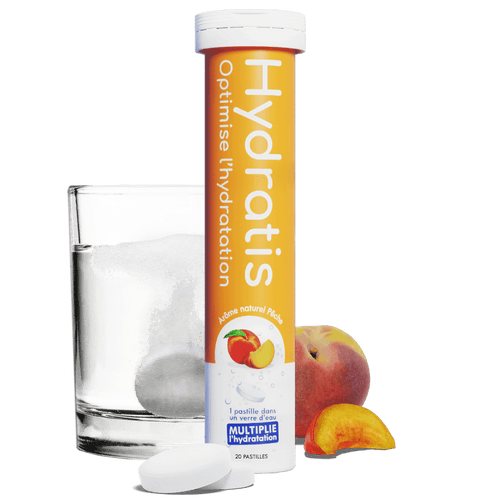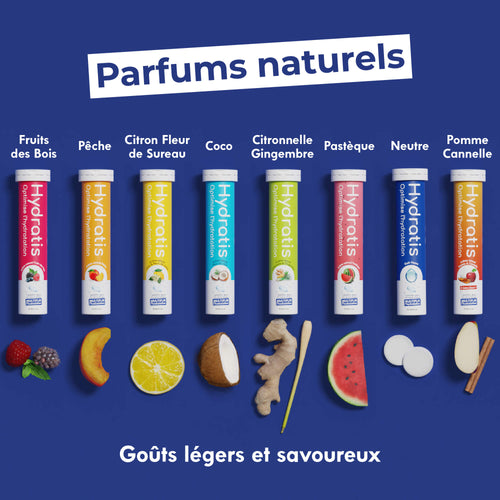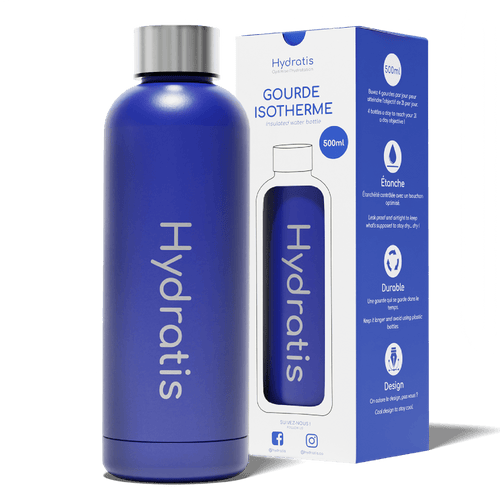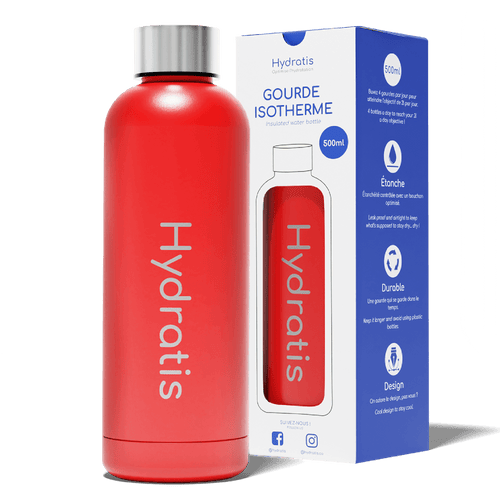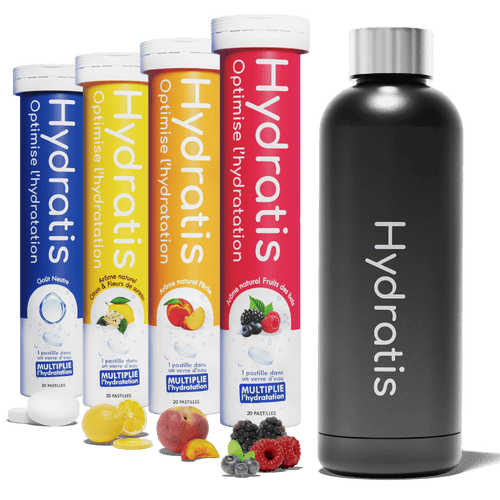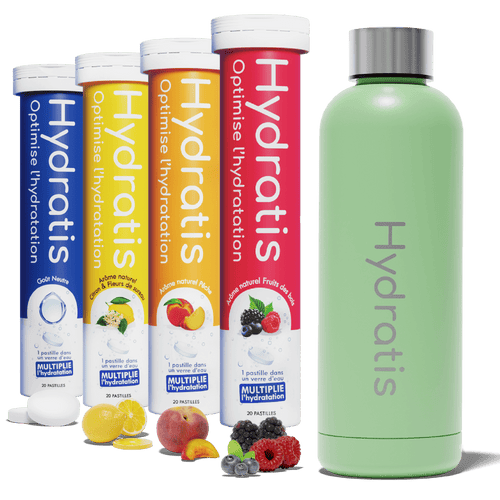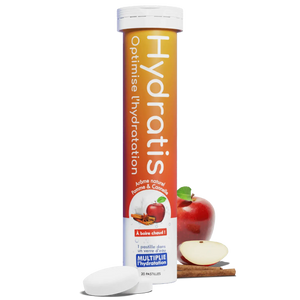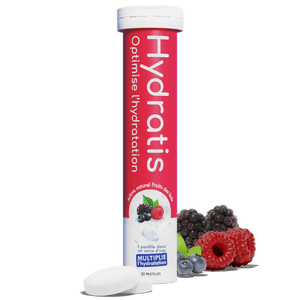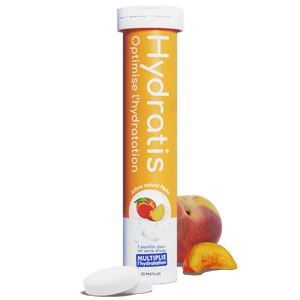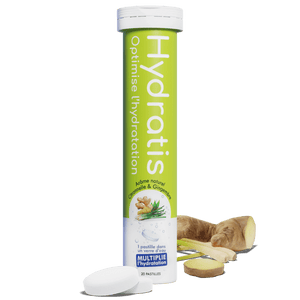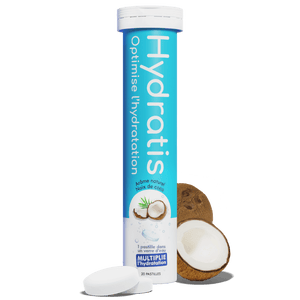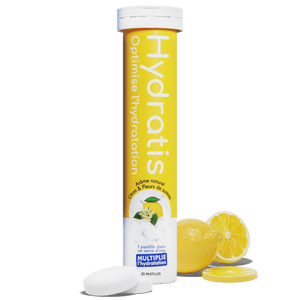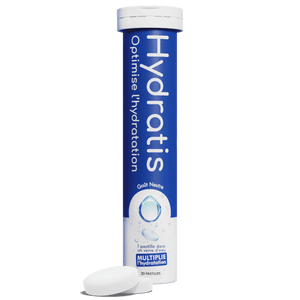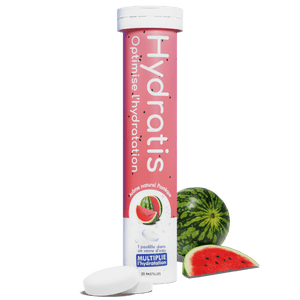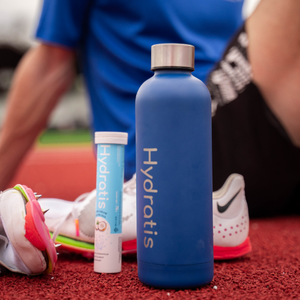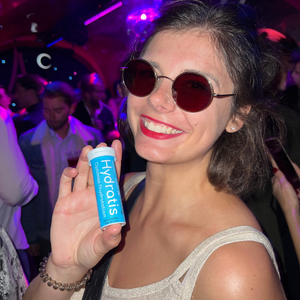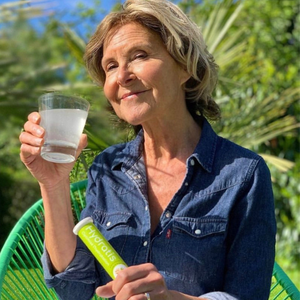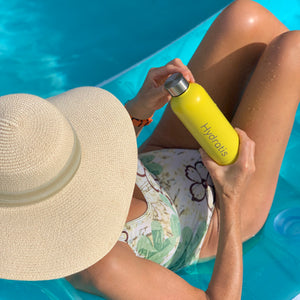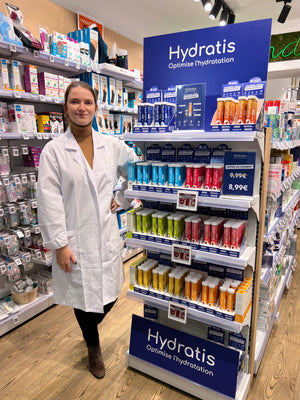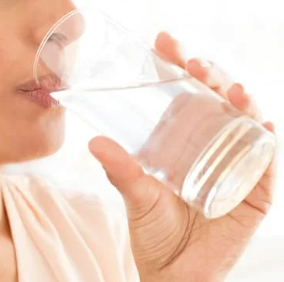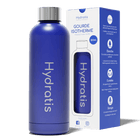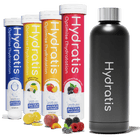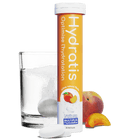
-
The importance of hydration in children
Water is the origin of life, from birth the human body contains 75% water, this ratio decreases with age to reach 60% in adulthood. Due to the high water content in infants, there is a greater need for hydration than in adults. Their body surface area weight ratio is higher than that of adults, which increases skin water loss, dehydration in infants can potentially lead to a faster death compared to children or adults. These needs are met by breast milk which contains a low renal osmotic load and covers the water needs of the infant. In children, the growth process increases energy metabolism which also increases their water needs.
Numerous studies have shown that the water consumption of children in France, but also in other countries, is generally lower than public health recommendations. According to this information, it is essential to make children aware of the importance of drinking before they feel thirsty and to encourage them to drink small quantities of water throughout the day, so as to compensate for water losses a insufficient fluid intake can have repercussions on their cognitive abilities.
The two most common situations leading to severe dehydration in children are:
- Heat: in summer during the heat, the child sweats much more than an adult and loses a very large proportion of water compared to its weight.
- Pathology such as acute infant diarrhea, an episode of gastroenteritis, vomiting.
How to spot the signs of dehydration? In the case of mild to moderate dehydration, a child may be lethargic, apathetic, more irritable than usual.
Severe dehydration can lead to more serious symptoms such as drowsiness (difficulty waking the baby) and it can even go as far as loss of consciousness and coma.
During severe dehydration, the oral rehydration solution in the form of a sachet is the most widely used solution containing sugar, sodium and potassium in order to replace the lost electrolytes and facilitate the absorption of liquids thanks to an isotonic solution.
Facilitating access to water in children's daily environment, particularly at school and during physical activities, is a good way to encourage them to consume water regularly.
The recommendations concerning the daily water intake vary according to age, you can refer to the following table in order to know the water intake necessary according to age.
|
Age |
Fluid intake needed |
|
0-6 months |
100-190 mL/kg/day |
|
6-12 months |
800 to 1000 mL/day |
|
1-2 years |
1100 to 1200 mL/day |
|
2-3 years |
1300mL/day |
|
4-8 years old |
1600mL/day |
|
9-13 years old |
2100 mL/day for boys 1900 mL/day girls |
|
From 14 years old |
2600 mL/day for boys 2000 mL/day for girls |
- Some tips to help your children drink during the day
Good eating habits are acquired early, as is the choice of drinks. Also, if it is advisable to educate children to eat a balanced diet and to move, the consumption of water must also be encouraged, to maintain adequate hydration To ensure good hydration here are some tips to motivate the child to drink All day long :
- Flavor the water with mint leaves, strawberry slices, basil or mint leaves, cucumber or strawberry slices or even ice cubes made from pure fruit juice.
- Give a glass of water, milk or fortified soy beverage at mealtimes.
- Incorporate liquids into the diet, such as soups, broths and smoothies on the children's menu, as these contain a lot of liquids.
- Increase plant consumption : Fruits and vegetables also have a high water content; for example, give cucumber or watermelon with meals and snacks.
- ORS (Oral Rehydration Solution) are preparations rich in bicarbonates, carbohydrates, mineral salts that quickly rehydrate the child in extreme cases.
- Make him drink more when the temperature is warm or during physical exertion and give him small amounts of liquid.
- Encourage her to drink small sips of water throughout the day.
- Serve the liquids in a colored glass or a water bottle.
- During the day, make water available to your child often (eg a pitcher of water on the table or counter) and make sure it is in plain view. He might want to drink it more if he gets permission to help himself.
- Have a water fountain in school spaces and if possible at home.
- Drink water too, showing him that you like it.
- Offer flavored and fresh infusions (eg iced teas) to your child. They are a good option to quench your thirst differently.
- Give your child a reusable water bottle or bottle so they can drink on the go. Children like to have their own things.
- Hydratis for your children from 3 years old!
Hydratis is a French company specializing in the theme of body hydration, it offers rehydration solutions for the whole family.
The Hydratis drink allows water to be absorbed more quickly and efficiently by the body while contributing to muscle recovery, reducing fatigue and fighting against cell stress (symptomatic of periods of dehydration).
The Hydratis solution has the property of enriching your water with mineral salts, sodium and glucose as well as trace elements in order to create an ultra-hydrating drink. Effervescent tablets with multiple flavors are an easy and fun solution to ensure your children's hydration. We also advise breastfeeding mothers to use Hydrastis lozenges to promote hydration after consulting a health professional (doctor or pharmacist).
Our lozenges are without dyes, without preservatives and with natural flavors (Peach, Fruits of the forest, Lemongrass Ginger, Mint, Anise and Neutral). You will find in our ranges a wide choice of products adapted to the needs of the whole family.
